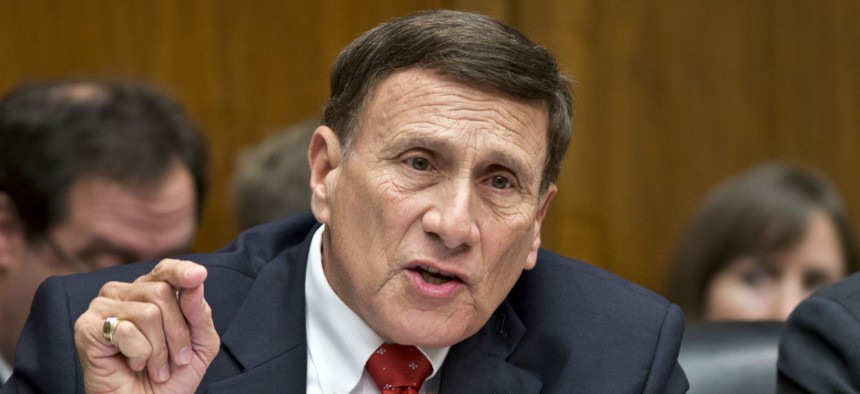Homeland Security Touts Progress in Tracking Visa Overstays
After vetting for terrorism, 99 percent of visitors are confirmed as having departed.
At a time of skepticism in the government’s ability to track foreign visitors who might have links to terrorism, the Homeland Security Department on Tuesday released a long-expected report on entry and exit data and visa overstays.
During fiscal 2015, efforts by Customs and Border Protection and Immigration and Customs Enforcement resulted in confirmation that 99 percent of non-immigrant visitors scheduled to depart did so, according to the report to several members of Congress from various committees.
In what the department called “significant progress,” DHS determined that 527,127 individuals overstayed their admission, for a total overstay rate of 1.17 percent, out of nearly 45 million nonimmigrant visitor admissions through air or sea ports of entry who were slated to depart.
Visa overstays have been a concern in Congress, particularly after the December terrorist attack on local government employees in San Bernardino, Calif., was linked to inspiration from the Islamic State. DHS was recently blasted by Reps. John Mica, R-Fla., and Stephen Lynch, D-Mass., for delays in handing over data on visa overstays.
All foreign nationals, the department stressed in a release, are vetted against multiple national security and law enforcement databases, including the Terrorist Screening Database, and additional data collection and checks occur at a point of entry before the visitors are admitted.
By examining arrival, departure and immigration status data, the department creates a composite picture while differentiating between suspected overstays and those who overstayed their visas but eventually departed.
The report also distinguishes between visitors from countries that are in the Visa Waiver Program and those that are not. Overstays are more common among visitors not in the program, which was designed to facilitate trade and tourism among friendly nations by allowing stays of 90 days without a visa. DHS is preparing changes to the traveler eligibility requirements mandated by the 2015 Visa Waiver Program Improvement and Terrorist Travel Prevention Act, as enacted in December.
Among non-Visa Waiver Program visitors from the Middle East in 2015, for example, visitors from Iran numbered 526; from Iraq, 693; and Syria, 864.
DHS expects the overall Suspected In-Country Overstay rate to continue declining, though “the process of matching data to determine overstays has been extremely difficult, as the data collection processes for arrival and departure information are not the same,” the report said. “The United States did not build its border, aviation and immigration infrastructure with exit processing in mind.”
DHS has reduced the number of documents that may be used to enter the United States, which “strengthened DHS’ ability to quickly and accurately collect information on all admissions,” it said. It will continue pilot programs this year to improve data, including biometric information, to match it with criminal and terrorist watch lists.
At least one immigration policy group criticized the trends DHS identified. “Lawmakers and the public should be tremendously concerned that DHS identified more than 400,000 foreign visitors who did not depart in 2015 as required and who apparently have joined the huge population of illegal aliens in the United States,” wrote Jessica Vaughn of the Center for Immigration Studies in a blog. “More than 12,000 came from countries associated with terrorism,” she wrote. “Clearly, our immigration controls are not sufficient to protect Americans. These scofflaws are encouraged by the Obama administration's appalling neglect of interior enforcement and overly generous visa policies.”
NEXT STORY: US to Convene 27-Nation Meeting on ISIS




